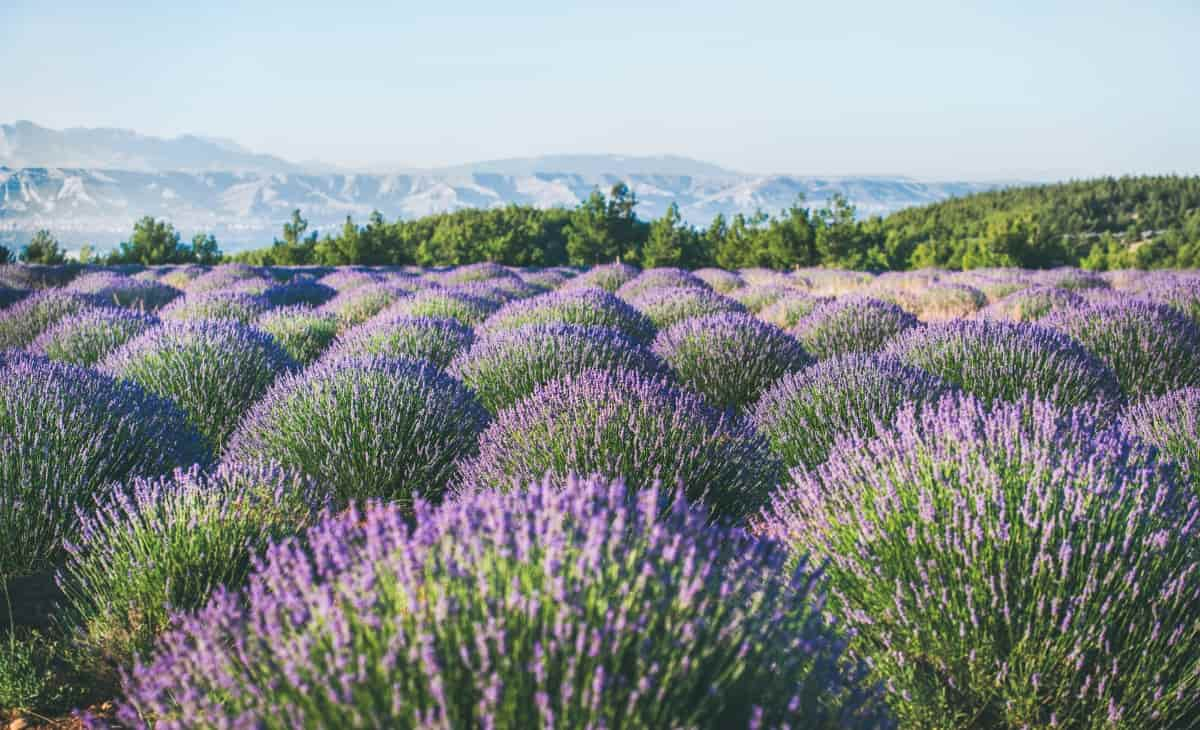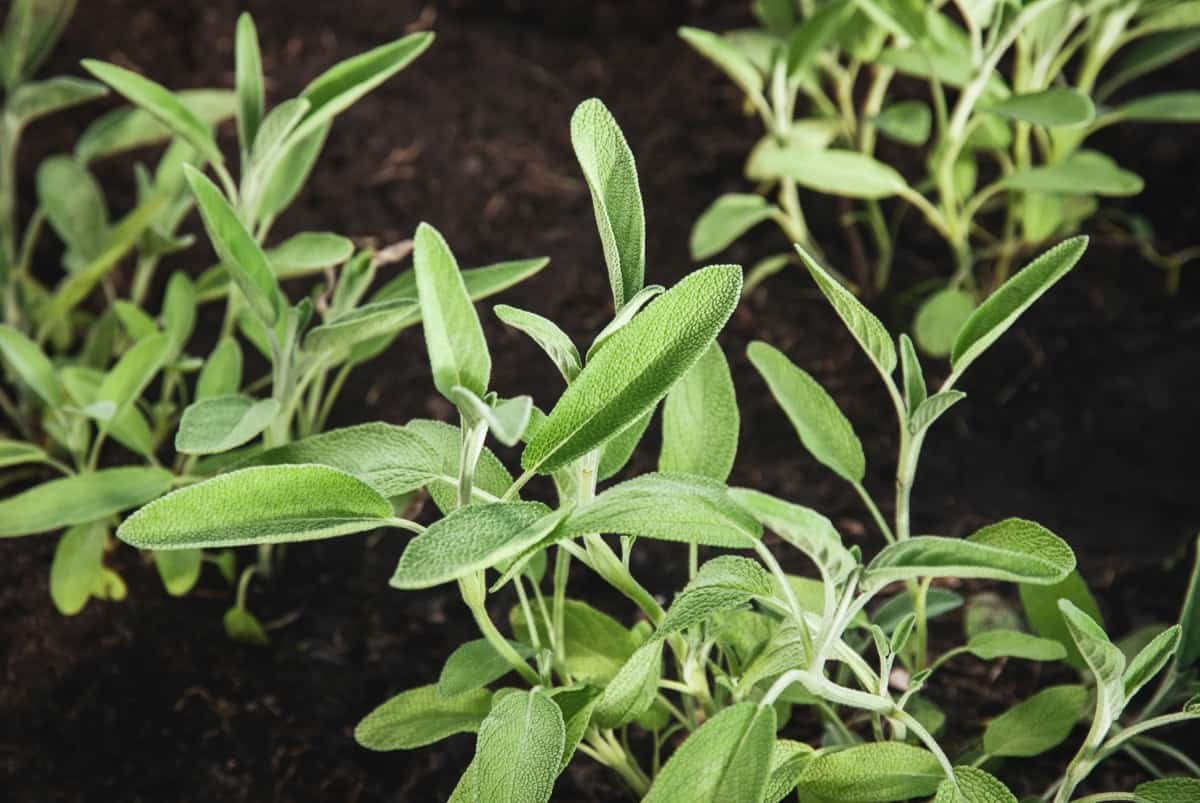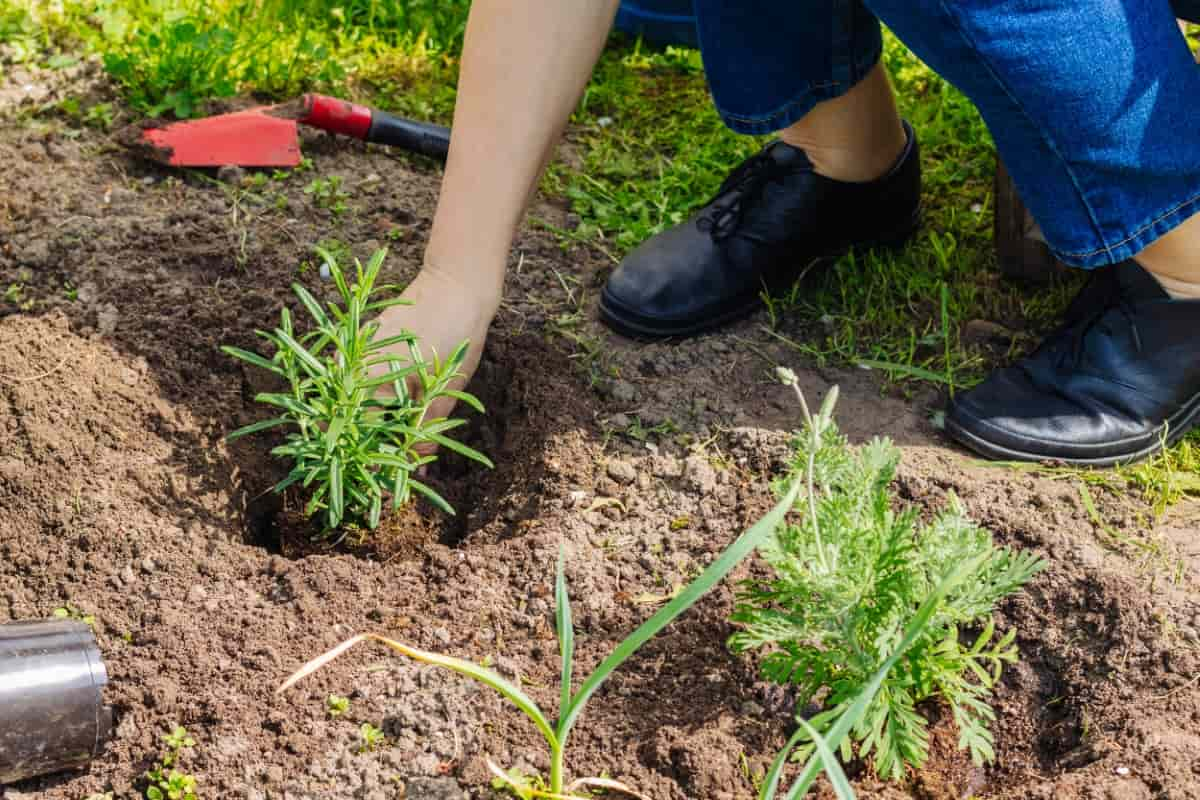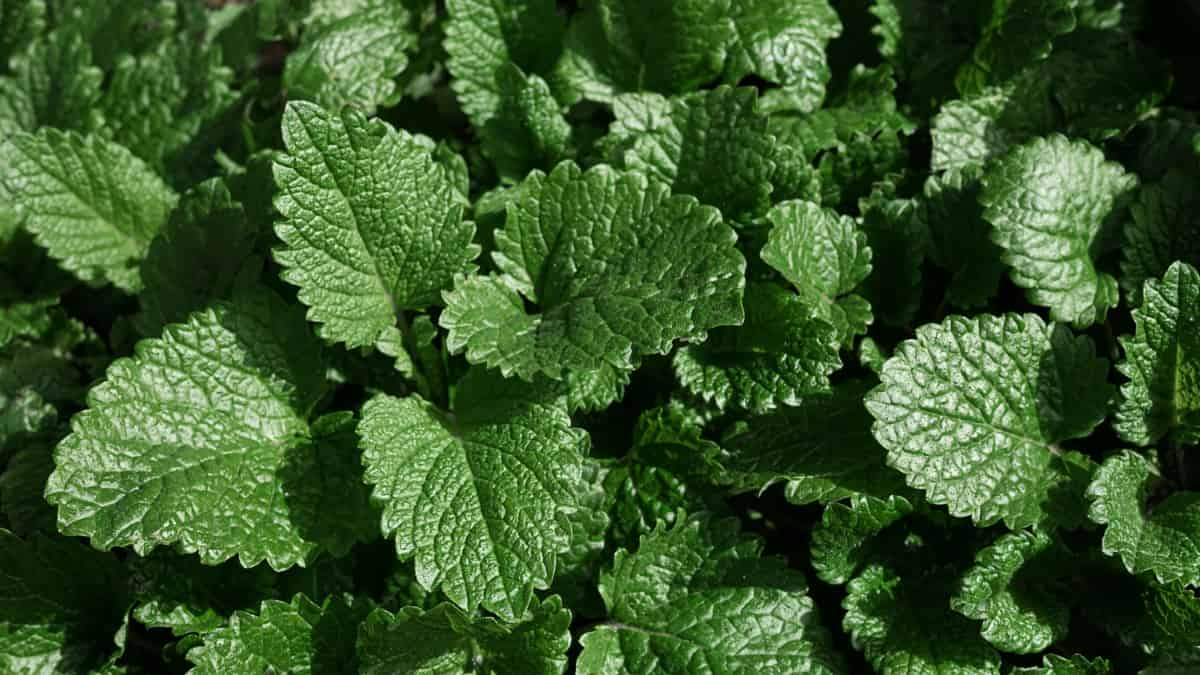Planting perennial herbs is a great way to enjoy fresh and flavorful herbs without constantly replanting. By following some simple guidelines, such as providing adequate sunlight and water, regular pruning, and fertilization when necessary, you can ensure your herb garden will flourish year after year. Not only do these perennial herbs provide delicious flavors for cooking or tea-making, but they also offer numerous health benefits. With proper care and maintenance, these perennial herbs will continue to thrive for years, providing endless delicious flavors.
Top 16 Perennial Herbs You Can Plant Once and Enjoy for Years
Lavender
Lavender is the most popular perennial herb grown in gardens worldwide. The plant is known for its fragrant purple blooms and calming aroma, making it a popular choice for essential oils. Growing Lavender is relatively easy if you provide well-draining soil and plenty of sunlight. It’s important not to overwater the plant since it can be susceptible to root rot.
In case you missed it: Growing Lavender, Planting, Care, and Harvesting

Once established, your Lavender plants require minimal care beyond occasional pruning and deadheading. You can expect them to bloom yearly from late spring through early summer. Aside from their aesthetic appeal, planting Lavender in your garden can attract pollinators like bees and butterflies while repelling unwanted pests like mosquitoes and moths.
Chives
Chives are a versatile herb that can add flavor to a wide range of dishes. These perennial herbs grow in clumps and are easy to cultivate. They produce delicate purple flowers in the summer, which makes them the best addition to any garden. Chives are the easiest perennial herbs to grow in your garden. One great thing about Chives is that they thrive in almost any soil type, making them an excellent choice for novice gardeners.
They require full sun but can also tolerate partial shade. You can plant Chives either from seeds or already established plants, which makes it easier to get started with this herb. Once planted, they require minimal care and attention since they are low-maintenance plants. During the summer, Chives will produce beautiful purple flowers and attract beneficial insects to your garden, such as bees and butterflies.
Lemongrass
Lemongrass is a tropical herb that adds an exotic flavor to any dish. Growing Lemongrass at home is easy if you have a warm climate or live indoors during colder months. Plant it in well-draining soil and water frequently. Not only does Lemongrass add depth of flavor to various recipes, but it also has several health benefits.
In addition to its culinary uses and health benefits, Lemongrass is also used in aromatherapy for its soothing scent. Growing Lemongrass at home is relatively easy, requiring well-draining soil and plenty of sunlight. With proper care, your Lemongrass will thrive year after year, providing fresh herbs whenever needed.
Curry Leaves
Curry Leaves are perennial herbs and easy to grow in your garden, making it convenient to have fresh Curry Leaves whenever needed. When growing Curry Leaves, it’s important to ensure they receive enough sunlight and water regularly. They can thrive in well-draining soil with plenty of organic matter. The plant may take some time to establish itself, but once it does, you’ll have abundant fragrant and flavorful Curry Leaves for years. As the plant grows taller, prune it regularly so that new growth can flourish.
Betel Leaf Plant
If you want to grow your Betel Leaf plants home, they’re relatively easy to cultivate. These plants thrive best in warm climates but can still grow well indoors if given proper care. Plant them in well-draining soil and provide sufficient sunlight for optimal growth. Regular watering will keep your plants healthy, while fertilizing every few months will ensure they receive all necessary nutrients. Adding some Betel Leaf plants to your garden can add flavorsome dimensions to meals while providing an array of health benefits too.
Wasabi
Wasabi is a perennial herb that thrives in cool and moist conditions. However, growing Wasabi in your garden is possible if you create an environment miming its natural habitat. Wasabi requires cool temperatures and high humidity. You can also achieve this by regularly watering the plant or using misters to moisten the leaves. When harvesting Wasabi, only cut what you need, as it doesn’t store well once harvested.
Sorrel
Sorrel leaves can be harvested throughout the growing season, but the best time to harvest them is before they turn yellow. When growing Sorrel in your garden or container pots, ensure it gets adequate sunlight for optimal growth. You can harvest the leaves throughout summer for use in various dishes or preserve them by freezing or drying them for later use. Sorrel is an easy-to-grow perennial herb packed with essential nutrients and medicinal benefits, making it a valuable addition to any kitchen garden.
Sage
This versatile herb can be easily grown in a garden or a small pot on your windowsill. It thrives in well-draining soil with plenty of sunlight but can also tolerate some shade. Sage is a perennial herb easy to grow and maintain in your garden. Sage has long, narrow leaves with a velvety texture and a strong aroma. Growing Sage is the best way to add fresh flavor and aroma to your meals.
In case you missed it: How to Grow Sage from Seed to Harvest: Planting and Care

Sage prefers full sun or partial shade and well-drained soil rich in organic matter. When planting Sage in your garden, ensure enough sunlight exposure (at least six hours of sun per day) and well-drained soil. Sage does not require frequent watering but should be watered deeply when necessary. Growing Sage in your garden provides delicious cooking flavors and numerous health benefits, making it an excellent addition to any herb collection.
Lovage
Lovage is an underutilized perennial herb that can be grown in any garden. The plant produces large, dark green leaves perfect for garnishing dishes or adding to salads. One of the best things about Lovage is that it requires little maintenance once established. In addition to its culinary uses, Lovage also has medicinal properties. Lovage is an herb that can add a unique flavor to your dishes.
In case you missed it: Growing Lovage In Pots, And Containers At Home

One of the benefits of growing Lovage is its versatility in cooking. Another benefit of this herb is its nutritional value. Regarding care, Lovage prefers moist soil and partial shade but can tolerate full sun if watered regularly. It does not require much fertilizer or pruning, which makes it less maintenance than other herbs. Growing Lovage in your garden can enhance the flavors of your meals while providing added health benefits.
Rosemary
Rosemary is an easy-to-grow plant that requires minimal care and is a perfect addition to any home garden. When planting Rosemary, set it in full sun with well-draining soil. This herb will thrive in hot and dry climates but won’t do well if overwatered or exposed to frosty weather conditions. Aside from its culinary uses, Rosemary has many health benefits too. Growing your own Rosemary at home ensures you’ll always have access to fresh herbs without running out whenever you need some.
In case you missed it: How to Grow Rosemary from Seed to Harvest: Check How this Guide Helps Beginners

Thyme
Thyme is one of the most popular perennial herbs you can plant in your garden. This low-growing, aromatic herb has been used for centuries for its medicinal and culinary properties. Thyme thrives in various soil types and can tolerate dry conditions and light frost. You can grow Thyme from seeds or cuttings, but starting with small plants is best.
In case you missed it: Growing Thyme Herb; Planting; Care; Harvesting

When planting Thyme, choose a sunny spot in your garden with well-draining soil. Thyme doesn’t like wet feet, so avoid planting it in areas where water tends to pool. In terms of care, Thyme requires minimal attention once established. Prune back dead stems or foliage regularly to promote new growth and prevent disease.
Tarragon
Tarragon is a perennial herb with long, slender leaves and a distinct anise-like flavor.
One of the great things about Tarragon is its ability to thrive in various conditions. It needs full sun but can tolerate shade and does well in moist and dry soil. Additionally, Tarragon requires little maintenance beyond occasional pruning to avoid getting too leggy. Aside from its culinary uses, Tarragon has been traditionally used for medicinal purposes. Tarragon is a versatile herb with many benefits for both cooking and health.
Lemon Balm
Lemon Balm herb is easy to grow and loves full sun or partial shade. It prefers well-drained soil with a neutral pH level but can adapt to different types of soils. Lemon Balm can be propagated by seed or cuttings. Growing Lemon Balm in your garden adds beauty and provides a versatile herb with numerous health benefits.
In case you missed it: Growing Lemon Balm At Home – A Planting Guide

One of the benefits of growing Lemon Balm in your garden is attracting beneficial insects such as bees and butterflies. When planting Lemon Balm, choose a spot with well-draining soil and partial shade. Ensure to water regularly during dry spells and fertilize once or twice yearly with organic fertilizer. Harvesting Lemon Balm can be done throughout the summer.
Bay Laurel
Bay Laurel is a great perennial herb that can add flavor and fragrance to your dishes for many years. One of the great things about Bay Laurel is that it’s very easy to grow. You can start with a small seedling or cutting and plant it in full sun or partial shade. You should give plenty of water and well-draining soil. When using Bay Laurel in your cooking, be sure not to use too much, as its flavor can be overpowering if you’re not careful. Bay Laurel is worth planting if you enjoy having fresh herbs at home all year round.
Peppermint
Peppermint is a refreshing herb used for centuries in various cultures. Gardeners appreciate Peppermint’s ability to spread quickly via underground runners called rhizomes. However, this same quality can make it invasive if not contained properly. For best results, grow Peppermint in containers or designated garden areas. Peppermint is a popular and versatile herb that’s easy to grow in your garden.
It has a refreshing scent and flavor, making it an excellent choice for culinary purposes. When growing Peppermint in your garden, make sure to plant it in well-drained soil that’s rich in organic matter. The plants prefer partial shade but can tolerate full sun with regular watering. To harvest Peppermint leaves, pinch off the top few inches of the stem just above the node where new growth emerges. This will encourage bushier growth and prevent the plant from becoming too leggy.
Holy Basil
This perennial plant has been praised for its medicinal properties for thousands of years. Growing Holy Basil is relatively easy but requires warm temperatures and plenty of sunlight. With proper care, this herb can thrive year-round and provide fresh leaves whenever needed. Growing Holy Basil is relatively easy as it thrives in warm weather conditions.
It prefers well-drained soil and full sunlight exposure. Once established, this herb requires minimal maintenance making it an excellent addition to any garden. Holy Basil is a wonderful culinary herb with various health benefits that make it worth planting in your garden year after year.
Conclusion
Planting perennial herbs in your garden is the best way to enjoy fresh and flavorful herbs year after year without replanting them. These low-maintenance plants add flavor to your meals and bring beauty and fragrance to your outdoor space. If you’re an experienced gardener or beginner, these easy-to-grow herbs will impress with their resilience and versatility.
- Seasonal Flower Gardening: Best Practices for Spring, Summer, Fall, and Winter
- How to Grow Hibiscus from Flower
- Plantation Ideas for Home Decoration: A Beginners Guide
- Flower Garden Designs and Layouts for Beginners
- Planting and Spacing Techniques in Papaya: A Beginner’s Guide
- Growing Gold: Essential Techniques for Planting Pineapples
- How to Make Kalanchoe Plant Bushy: Home Remedies and Solutions
- 11 Reasons Why Your Gardenia is Not Blooming: Home Remedies and Solutions
- Eco Elegance: The Guide to Designing a Drought-Tolerant Landscape
- Gardening on a Slope: Strategies for Hillside Landscaping
- Nourish and Flourish: Top Organic Mulches for Thriving House Plants
- Everything You Want to Know about Indian Mogra Flower: Discover Uses and Growing
- Green Thumb Success: Expert Tips for Cultivating Greenhouse Pumpkins All Year Round
- Maximize Growth & Flavor: The Ultimate Guide to Companion Planting in Herb Gardens
- How to Control Rhododendron Problems Naturally: Home Remedies and Organic Ways to Fix Them
- Natural Magic: The Remarkable Benefits of Cinnamon for Plants
- Best Steps to Revive Dying Tulip with Natural and Organic Treatment
- 10 Reasons Why Your Angel Trumpet is Not Blooming: Remedies and Treatment
- How to Fix Periwinkle Leaf and Flower-Related Problems: Natural Remedies and Solutions
- How to Fix Zinnias Leaf and Flower Problems: Discover Natural and Home Remedies
- Organic Steps to Induce Lemon Tree Flowers: A Comprehensive Guide
- Bloom Booster: Crafting the Perfect Homemade Bougainvillea Fertilizer
- Optimizing Growth: A Guide to Applying NPK Fertilizer for Potted Plants
- 10 Best Homemade Fertilizers for Rubber Plant: DIY Recipes and Application Method
- How to Boost Female Pumpkin Flowers: Effective Steps for More Flowers and High Yields
- Transform Your Indoor Garden: Top Benefits of Pink Salt for Houseplants
- 10 Best Homemade Fertilizers for Peacock Plants (Calathea): Easy DIY Guide
- Unlock Blooms: 9 Reasons Why Your Potted Chrysanthemum is Not Blooming
- 8 Reasons Why Your Potted Hibiscus is Not Blooming: Fix it with Simple Solutions
- Unlock Blooms: 9 Key Reasons Your Potted Frangipani Won’t Flower
- 10 Reasons Why Is My Ice Plant Not Blooming: Remedies and Treatment
- 10 Reasons Why My Potted Hydrangea Not Blooming: Treatment and Remedies
- 10 Reasons Why is My Wisteria Not Blooming: Remedies and Treatment
- 10 Reasons Why is My Goldfish Plant Not Blooming: Remedies and Treatment
- Maximize Your Space: Ultimate Guide to Balcony Gardening with Grow Bags
- 10 Reasons Why Your Iris is Not Blooming: Remedies and Treatment